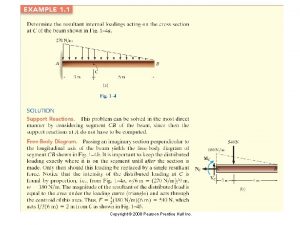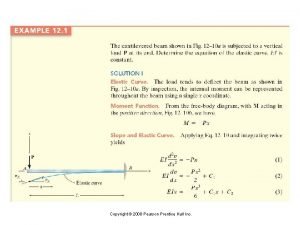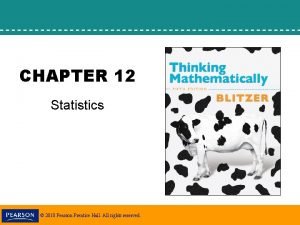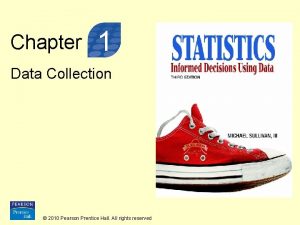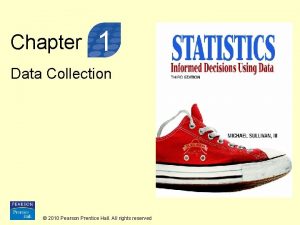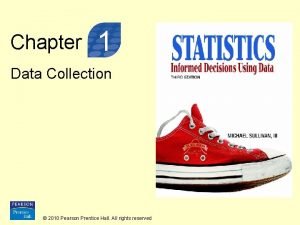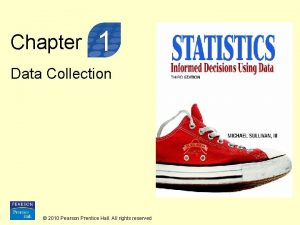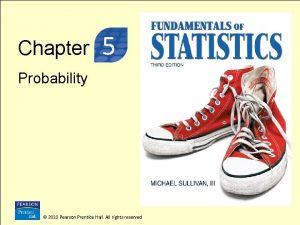Chapter 1 Data Collection 2010 Pearson Prentice Hall








- Slides: 8

Chapter 1 Data Collection © 2010 Pearson Prentice Hall. All rights reserved

Section 1. 5 Bias in Sampling © 2010 Pearson Prentice Hall. All rights reserved

Objective 1. Explain the Sources of Bias in Sampling © 2010 Pearson Prentice Hall. All rights reserved 1 -3

If the results of the sample are not representative of the population, then the sample has bias. Three Sources of Bias 1. Sampling Bias 2. Nonresponse Bias 3. Response Bias © 2010 Pearson Prentice Hall. All rights reserved 1 -4

Sampling bias means that the technique used to obtain the individuals to be in the sample tend to favor one part of the population over another. Undercoverage is a type of sampling bias. Undercoverage occurs when the proportion of one segment of the population is lower in a sample than it is in the population. © 2010 Pearson Prentice Hall. All rights reserved 1 -5

Nonresponse bias exists when individuals selected to be in the sample who do not respond to the survey have different opinions from those who do. Nonresponse can be improved through the use of callbacks or rewards/incentives. © 2010 Pearson Prentice Hall. All rights reserved 1 -6

Response bias exists when the answers on a survey do not reflect the true feelings of the respondent. Types of Response Bias 1. Interviewer error 2. Misrepresented answers 3. Words used in survey question 4. Order of the questions or words within the question © 2010 Pearson Prentice Hall. All rights reserved 1 -7

Nonsampling errors are errors that result from sampling bias, nonresponse bias, or data-entry error. Such errors could also be present in a complete census of the population. Sampling error is error that results from using a sample to estimate information about a population. This type of error occurs because a sample gives incomplete information about a population. © 2010 Pearson Prentice Hall. All rights reserved 1 -8
 2011 pearson education inc
2011 pearson education inc Pearson education inc publishing as pearson prentice hall
Pearson education inc publishing as pearson prentice hall Pearson education inc publishing as pearson prentice hall
Pearson education inc publishing as pearson prentice hall Pearson 2012
Pearson 2012 Pearson education inc publishing as pearson prentice hall
Pearson education inc publishing as pearson prentice hall Pearson prentice hall
Pearson prentice hall 2008 pearson prentice hall inc
2008 pearson prentice hall inc Copyright 2005 pearson prentice hall inc
Copyright 2005 pearson prentice hall inc Pearson prentice hall
Pearson prentice hall





